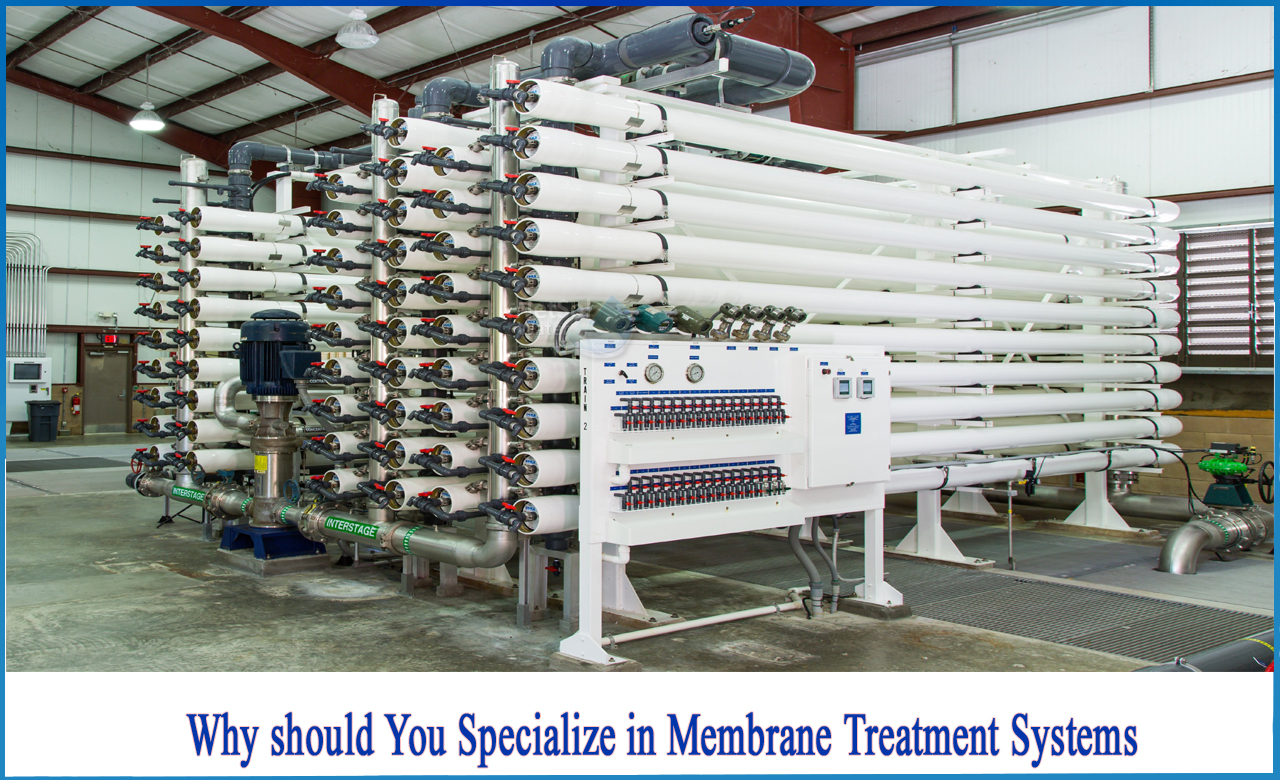Why should you specialize in Membrane treatment systems?
Membrane water treatment is a method of removing undesirable elements from water using membranes. A membrane is a barrier that permits some substances to pass through while preventing others from doing so. Water treatment facilities clean surface water, groundwater, and wastewater using various membranes and processes to provide water for industry and drinking.
Different types of membranes
Depending on the impurities that need to be removed and the end-desired user's product water quality, there are various different types of membranes that can be used to treat water.
Membranes are classified into the following types:
1: Water Treatment using Reverse Osmosis and Nanofiltration
In Reverse Osmosis, pressure is used to overcome the natural tendency of clean water to pass through a semi-permeable membrane while concentrating salts and other dissolved solids on the feed side of the membrane.It is often used to produce potable water from brackish groundwater or surface water as well as wastewater.It is used to desalinate seawater, with very "tight" membranes rejecting nearly all of the salt in the feedwater. Seawater desalination is appropriate for places with little available surface or groundwater, as well as for drought-stricken areas.
Nanofiltration is a membrane separation method with a cut-off point that falls between reverse osmosis and ultrafiltration. The typically utilized working pressure is in the range of 0.3 – 4.0mpa. The cut-offs are set to be between 180 and 2000 Dalton.
Nanofiltration works in the same way as reverse osmosis, but the semi-permeable membrane is "looser," allowing some salts through while rejecting bigger dissolved molecules including hardness, organics, and colour.
2: Water Treatment using Microfiltration and Ultrafiltration
Microfiltration is the filtration of a suspension with colloidal or other tiny particles with linear dimensions ranging from 0.02 m to 10 m. The typical operating pressure for microfiltration is between 0.02 mpa and 0.5 mpa. It is typically performed in both the cross-flow and dead-end modes. The raw solution runs along the membrane surface in cross-flow filtration, with just a small fraction of the liquid escaping through the membrane as a permeate. The concentrate is circulated in a loop to continuously reduce concentration polarisation and is thus utilized to clean the membrane.
Ultrafiltration (UF) is a pressure-driven separation process that is guided by a screening principle and is particle size dependant. Ultrafiltration membranes have pore sizes ranging from 1 nm to 100 nm, allowing the retention of molecules with molecular weights ranging from 300 to 500,000 Dalton.
Conclusion
Municipalities and industries are turning to membrane treatment for process solutions as environmental federal rules become more stringent.The Environmental Protection Agency, BIS, and CPCB are in charge of creating drinking water standards, identifying water contaminants, and regulating drinking water in India.
The following are some instances of controlled contaminants:
-Microorganisms (giardia, bacteria, algae, viruses)
-Decontaminants (chlorine and ammonia)
-By-products of disinfection (bromate, total trihalomethanes)
-Inorganic chemistry (calcium, magnesium, sulphates, asbestos, copper, cyanide, fluoride, lead)
-Natural organic chemicals (acrylamide, glyphosate, styrene, vinyl chloride)
-Radionuclides (gross alpha particles, radium, uranium)
What do we offer?
Netsol Water is a renowned producer of water and wastewater treatment plants. We have a reputation for being the top commercial RO plant manufacturer, industrial RO plant manufacturer, sewage treatment plant manufacturer, effluent treatment plant manufacturer, and much more. Aside from that, our USP is 24x7 customer assistance.
For further inquiry, or product-purchase-related questions, give us a call on +91-9650608473 or email at enquiry@netsolwater.com.



